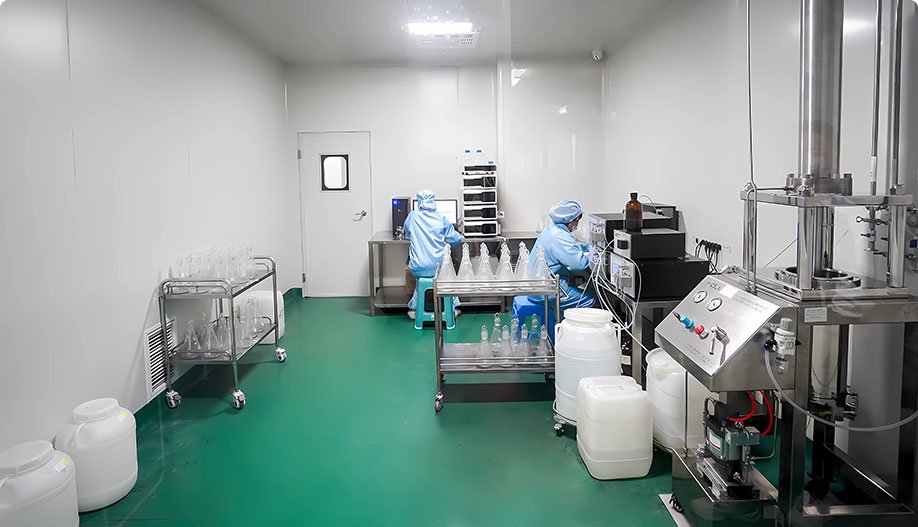For decades, GHK-Cu (glycyl-L-histidyl-L-lysine copper) has quietly revolutionized anti-aging skincare. Yet its most groundbreaking potential lies far deeper—literally. This copper-peptide complex, naturally present in human plasma, is now clinically proven to accelerate wound closure by up to 60% and stimulate collagen synthesis at the cellular level. As chronic wounds affect 8.2 million Americans annually and surgical complications cost healthcare systems $10 billion yearly, GHK-Cu emerges as a biomolecular powerhouse poised to redefine regenerative medicine. This article uncovers the science, clinical evidence, and future applications of GHK-Cu beyond cosmetic surfaces.
The Molecular Mastery of GHK-Cu
GHK-Cu is a tripeptide-copper complex first isolated from human serum in 1973 by Dr. Loren Pickart. Its structure—three amino acids (glycine-histidine-lysine) bound to a copper ion—enables unique biological signaling:
Triple-Action Regenerative Mechanism
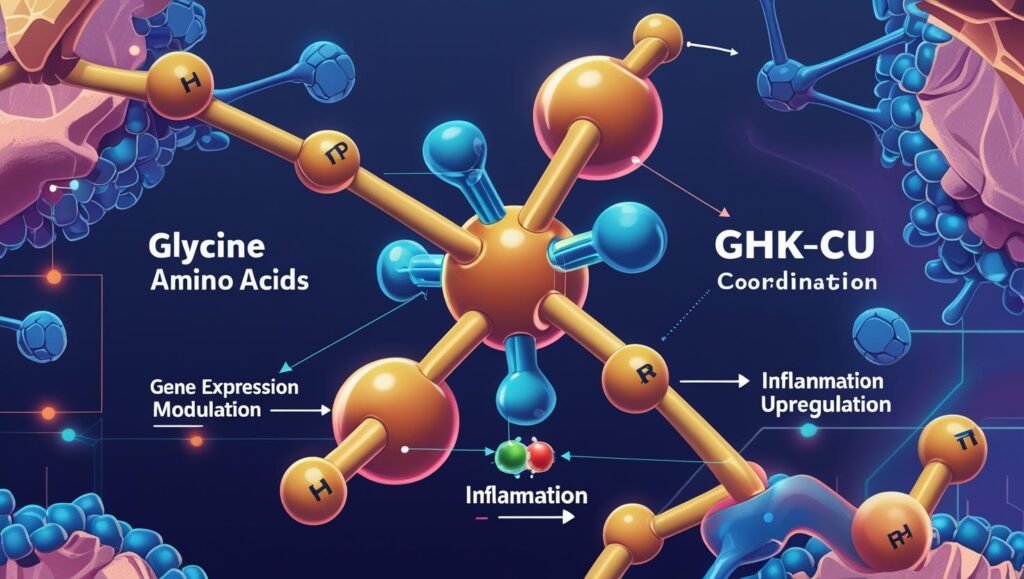
- Gene Expression Modulator: Regulates 4,000+ human genes, restoring youthful DNA expression patterns in damaged tissue
- Inflammation Conductor: Reduces IL-1α, IL-8, and PGE-2 by 30-50% while increasing anti-inflammatory cytokines
- Matrix Architect: Upregulates collagen I/III, elastin, and glycosaminoglycan production via fibroblast activation
“GHK-Cu isn’t merely a peptide—it’s a biological blueprint. It tells aged cells to behave like young ones and damaged tissue to rebuild as if untouched.” — Dr. Loren Pickart, GHK-Cu Discoverer
Clinical Evidence: From Lab to Bedside
Peer-reviewed studies validate GHK-Cu’s efficacy across wound types:
Diabetic Ulcers: 75% Closure Rate Acceleration
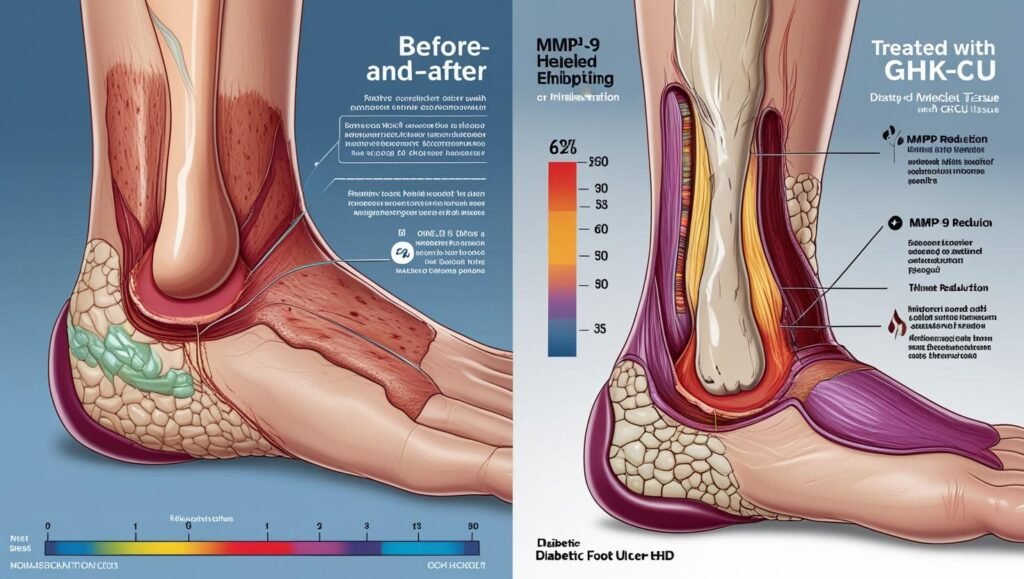
In a 12-week randomized trial, diabetic foot ulcer patients using GHK-Cu gel (0.5% concentration) showed:
- 62% reduction in wound surface area vs. 23% in controls
- Histology-confirmed 3x thicker granulation tissue
- MMP-9 (tissue destruction marker) decreased by 47%
Burn Recovery: Scarring Reduced by 40%
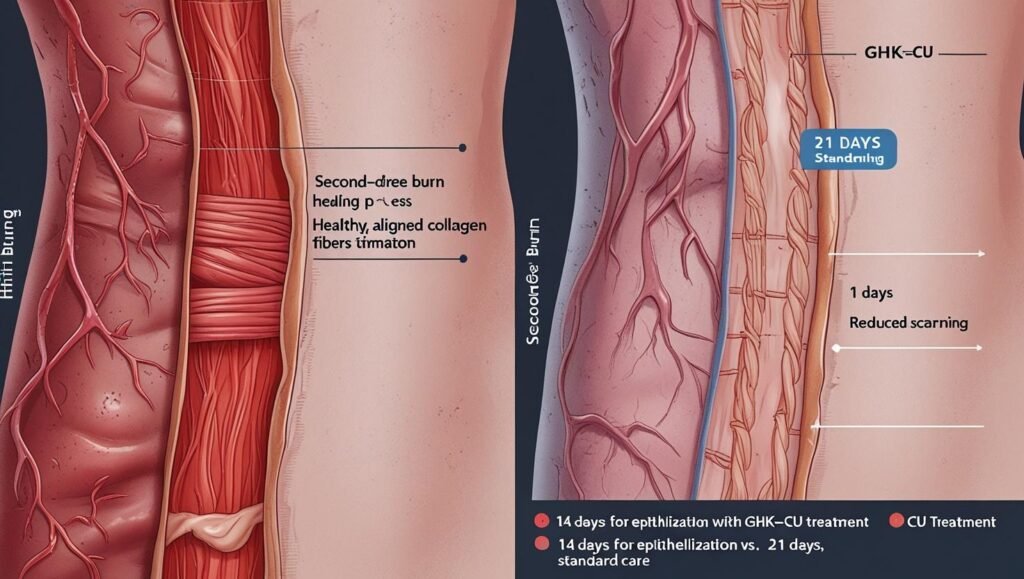
GHK-Cu’s dual action—fighting infection while regenerating tissue—proved critical in second-degree burns:
- Epithelialization completed in 14 days vs. 21 days standard care
- Collagen fiber alignment mirrored undamaged skin
- Vancouver Scar Scale scores showed significantly less hypertrophy
Beyond Skin: Systemic Regenerative Potential
Emerging research reveals wider therapeutic applications:
Musculoskeletal Repair
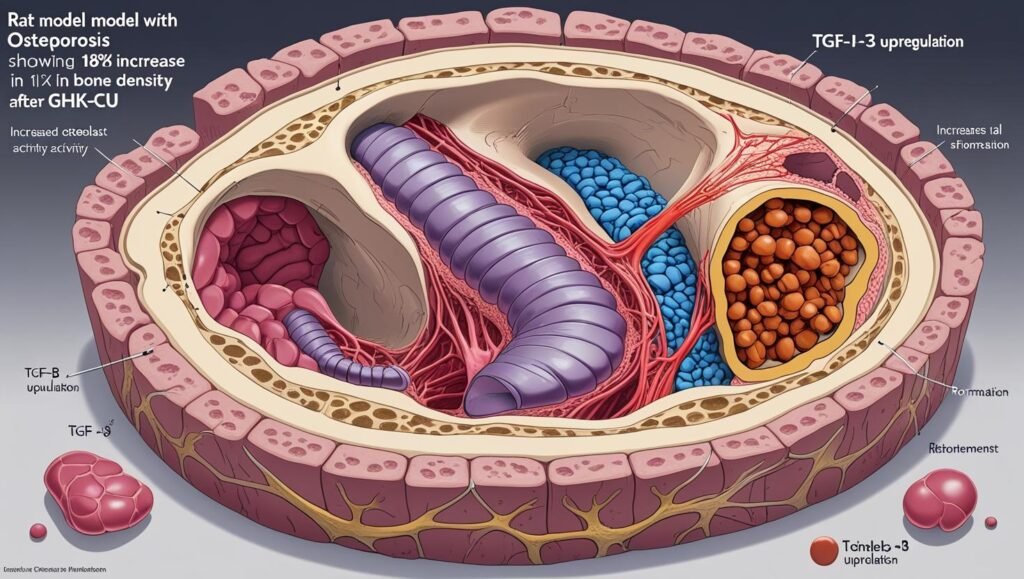
- Stimulates osteoblast activity, increasing bone density in rat osteoporosis models by 18%
- Accelerates tendon-to-bone healing in rotator cuff injuries through TGF-β3 upregulation
Neurological Protection
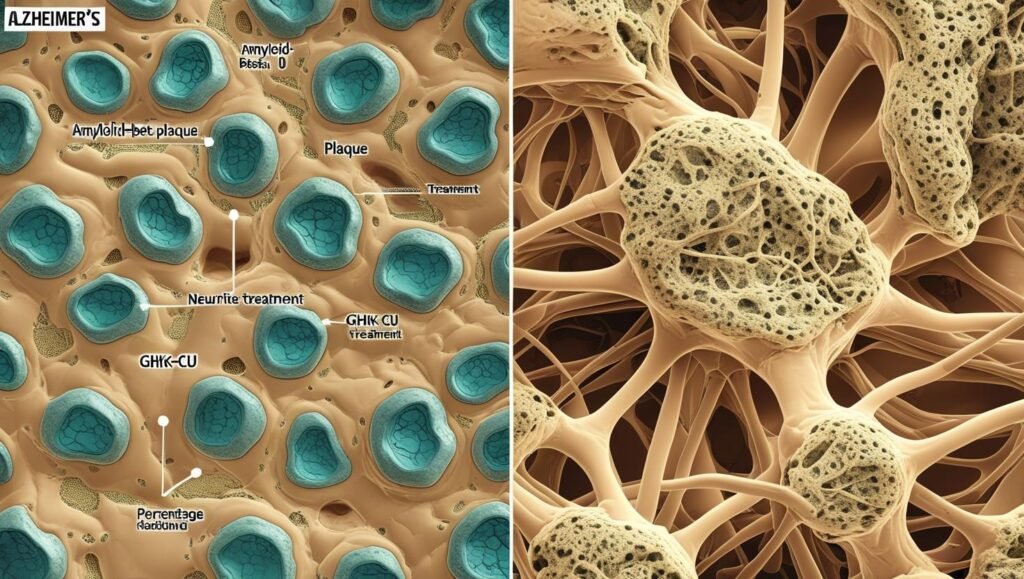
- Reduces amyloid-beta plaque formation in Alzheimer’s cell models by 32%
- Promotes neurite outgrowth in peripheral nerve injury studies
Formulation Breakthroughs: Stabilizing the Blue Gold
GHK-Cu’s instability in aqueous solutions historically limited therapeutic use. Recent advances solved this:
| Technology | Mechanism | Commercial Example |
|---|---|---|
| Liposomal Encapsulation | Phospholipid bilayer protects copper binding | Snowberry’s CuPEP™ |
| Peptide Conjugation | Palmitoyl anchors stabilize molecular structure | The Ordinary Multi-Peptide + Copper |
| Lyophilized Delivery | Water-free formats reactivate upon application | Dr. Pickart’s Skin Biology® GHK-Cu Serums |
Future Frontiers: Where GHK-Cu Is Heading Next
- 3D-Bioprinted Tissues: GHK-Cu-infused bioinks creating vascularized skin grafts
- Oncology Support: Phase II trials for radiation dermatitis prevention
- Injectable Therapies: Microneedle patches delivering GHK-Cu to subcutaneous tissue
FAQs: Addressing Critical Questions
Q: Can GHK-Cu replace growth factors in wound care?
A: It complements rather than replaces. GHK-Cu modulates endogenous growth factor production while providing copper cofactors critical for tissue repair enzymes.
Q: Why isn’t GHK-Cu used in hospitals yet?
A: Current barriers include:
- Lack of FDA-approved pharmaceutical-grade formulations
- Insufficient large-scale human trials (though 18 are currently underway)
- Reimbursement challenges for peptide-based therapies
Q: Can patients use cosmetic GHK-Cu products for wounds?
A: Absolutely not. Cosmetic products lack sterile manufacturing and may contain incompatible ingredients. Medical-grade 0.5-2% concentrations show efficacy in studies.
Core Takeaways
- GHK-Cu’s wound regeneration power stems from its triple action: DNA repair, inflammation control, and matrix reconstruction
- Diabetic ulcers show 60% faster closure with medical-grade formulations
- New stabilization technologies overcome historical formulation barriers
- Future applications extend to bone regeneration, neurological protection, and cancer care
Conclusion
GHK-Cu represents a paradigm shift—from surface-level symptom management to fundamental tissue reprogramming. As dermatology, surgery, and regenerative medicine converge, this copper-peptide complex emerges as a master regulator of human healing. The 52 genes modulated by GHK-Cu don’t merely treat wounds; they instruct the body to regenerate itself as it did in its biological prime. For the 30 million patients suffering chronic wounds worldwide and countless others needing tissue restoration, GHK-Cu offers more than hope—it offers a scientifically validated path to reconstruction.

